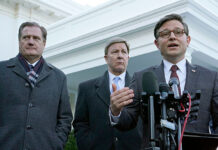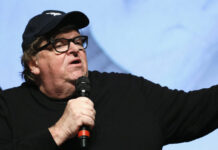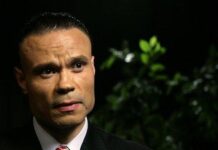According to a Thursday report by the Bureau of Labor Statistics (Bolster of Labor Statistics), the Consumer Price Index (CPI), rose 8.2% between September 2021, and September 2022. This was higher than expected despite the Federal Reserve’s harsh contractionary policy and bodes poorly for Democratic prospects in midterm elections.
Analysts had predicted a 0.4% month-to-month rise, but core inflation, which takes into account volatile food categories and energy categories, was 0.6%. This is against 0.4%. The headline number was helped by a 0.8% increase in food prices and a 0.7% rise in shelter prices.
In a statement, Mark Hamrick, senior economist at Bankrate, stated that “given the high cost of food, heating, and healthcare, many people’s budgets may remain restricted next year.”
As trading opened on Thursday morning, the Dow Jones Industrial Index dropped 1.7%, while the Nasdaq fell 3%, and the S&P 500 2.2%, respectively.
The September year-over-year inflation was basically unchanged from the 8.3% reading in July. Although the 8.5% and 9.1% inflation rates in July were moderated, lower energy costs resulted in moderation. However, gasoline prices have returned to an upward trend.
Federal Reserve policymakers raised the target interest rate by 0.75% last month to alleviate rising inflationary pressures. This follows two similar hikes in June and July. The constantly rising price levels could prompt more action.
Hamrick said that the Federal Reserve sees a bright green light for future interest rate rises. Based on the most recent snapshots of inflation, they believe that the target range for federal funds rates must be higher. The pivot is not yet visible, but there’s a push toward higher ground.
In order to stimulate the economy during the recession-induced lockdown, central bankers initially set a near-zero target interest rate. They also acquired government bonds. Leading economists have criticized the central bank in the wake of the return to a contractionary monetary regime. They claim that officials who failed to respond to the rise in prices over the past two decades are now doing undue damage through their desire to fight inflation.
Lael Brainard, Federal Reserve Vice Chairman, stated earlier this week that monetary policy would be “restrictive for some time” to make sure that inflation returns to target. Jerome Powell, Federal Reserve Chair, also promised that officials will slash inflation down to 2%. This is the rate that has been maintained for most of the past 30 years. He stressed that the institution must regain its mandate to maintain stable prices.
President Joe Biden has deflected repeatedly on the role of his administration in increasing prices through multiple spending packages. Voters are focusing on the economy and inflation as key issues in the coming midterm elections. 84% consider the latter to be their top concern. According to polls from ABC News and The Washington Post, the Republicans are ahead of the Democrats by 16% and 19%, respectively, in terms of trust in managing the economy and inflation.
Hamrick stated, “The inflation picture is now essentially set before midterm elections.” “If the news is viewed in isolation, which it isn’t, the news doesn’t help Democrats control Congress.”




